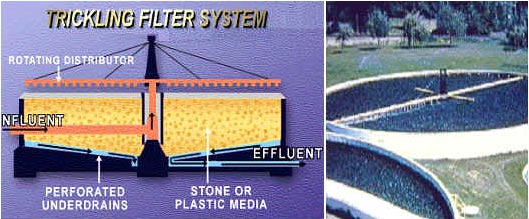-
 Sewerage Facts
Sewage • Sewage Characteristics • Sewage Treatment Objectives • Sewage Treatment Methods • Sewage Treatment System • The Evolution Of Sewage Treatment Sewage Treatment Plant • Package Plants • Combined Process • Imhoff Tanks • Oxidation Pond Effluent Standards Individual Septic Tanks Population Equivalents Water Cycle Confined Space Ammonia Green Technology Lighter Side
Sewerage Facts
Sewage • Sewage Characteristics • Sewage Treatment Objectives • Sewage Treatment Methods • Sewage Treatment System • The Evolution Of Sewage Treatment Sewage Treatment Plant • Package Plants • Combined Process • Imhoff Tanks • Oxidation Pond Effluent Standards Individual Septic Tanks Population Equivalents Water Cycle Confined Space Ammonia Green Technology Lighter Side - Technical Resources Center
-
 INDAH WATER RESEARCH CENTRE
INDAH WATER RESEARCH CENTRE
Package Plants | Aerated Lagoons | Extended Aeration Systems | Oxidation Ditch | Rotating Biological Contractors | High Rate Trickling Filter
High Rate Trickling Filter (HRTF)

The modern trickling filter comprises a bed of highly permeable medium to which micro-organisms are attached. Sewage is percolated or trickled through this media which is made from rocks (2cm to 10cm in size) or specially designed plastic.
Rock beds are typically 2 meters deep and are circular. A revolving arm is used to distribute the sewage over the media. Plastic media varies in design with depths ranging from 4 to 12 meters depending upon the organic load.
Filters under the media drain the effluent and biological solids, which have become detached from the media. Air is circulated back through the drainage system to the media. The effluent from the drain is settled before discharge to the receiving environment.
Some effluent from the drain is recycled to dilute the strength of the incoming sewage and to ensure the media remain moist.
As the effluent passes through the media organic material is absorbed onto the biological film or slime layer covering the media. Here is it degraded by aerobic micro-organisms. As the slime layer grows an anaerobic environment is created near the media interface. Eventually the micro-organisms at the media interface loose their ability to cling to the media and the slime is washed off. A slime layer begins to grow again and the cycle is repeated.
Filters are classified by hydraulic or organic loading rates. Classifications are low rate, intermediate rate, high rate, super high rate and roughing. Re-circulation of filter effluent permits higher organic loadings in high rate filters.
Typical figures for high rate trickling filter are as follows:-
| (mg/L) | Raw Sewage | Effluent | DOE Standard B |
|---|---|---|---|
| Biological Oxygen Demand | 200-400 | 10-30 | 50 |
| Suspended Solids | 200-350 | 15-40 | 100 |
High rate trickling filters remove between 65% to 85% of the organic load. They are used where there is sufficient land available and where a quiet operation is required. They can sustain some variation is hydraulic or organic load.
LATEST HEADLINES
- CUSTOMER : Please CLICK HERE to see how we handle your personal data
- Click CUSTOMER tab for more info on charges, services, check your account balance & statement of account request
- Click DEVELOPER tab for certifying agency offices, check submission status & get sewerage work-related forms
- Click CONTRACTOR tab for contractor & supplier online registration and IWK Technical Training Centre
- Your feedback is important to us. Please do not hesitate to contact us with your constructive comments.


